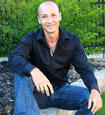It is rather simple to mistakenly take an anxiety attack for a real heart attack. In fact, most casual observers would not even know the difference between the two if they see it happening right before their eyes. The clear signs of an anxiety attack reflect the commonly known signs of a heart attack, with the differences being only apparent if one knows what to look for. Unfortunately, this close similarity also makes it difficult for people to know what to do in the event that a person experiences one or the other. For the most part, the only real response that people have when someone is undergoing a heart attack, anxiety attack, or even a stroke, is to simply call an ambulance and try not to panic while waiting for it. However, in reality, there are some basic first aid measures that a person can take in the meantime.
Breath!
The first thing is to restore balance to the person's breathing. An anxiety attack often disrupts the circulatory and respiratory systems, causing a number of effects on their normal functioning. An attack can result in someone having a decreased heart rate, lowered blood pressure, and an increase in the body's circulation. Any muscle pain that a person is feeling would also be decreased during an attack. While these signs cannot do any long-term or significant damage on their own, they can upset the body's natural chemistry and trigger other changes that may cause damage. Restoring the usual balance of breathing and blood circulation can help prevent the damage that might be done in the event of an anxiety attack.
How Your Posture?
In many ways, this can also help in the event of a heart attack. More of a precautionary measure than first aid, keeping an eye on a person's posture can also help people have better odds in the face of an anxiety attack. Bad posture has a tendency to compress vital organs in the stomach and abdomen, which makes them more vulnerable to possible damage during an attack. Bad posture can also lead to cramped space for the lungs and heart, which in turn can make breathing difficult under normal circumstances. The problem can only be worsened when a person is having an attack, where the lungs and heart are not working properly and other signs of discomfort such as shortness of breath and low blood pressure are not entirely uncommon.
It's A Bird! It's A Plane! It's A... Anxiety Gone.
Diversion tactics are also known to help someone if they are experiencing an attack, though this is usually best done by the person themselves. There are various diversionary tactics that can be employed, with most doctors agreeing that the best effects come about if the tactics are done simultaneously. In general, anything that occupies the mind during an attack is a good idea, so long as it does not add further stress. Most experts suggest counting to 100 at high speed, though some have noted that most people also appear to respond to doing simple mathematical equations in their head positively. My personal favorite diversion tactic during an anxiety attack is to either count slowly from 50 down to 1 skipping every third number, then back up again to 50. Or apply what I like to call 'Focused Distraction' a technique that combines movement with a challenge. For example, walking at 80 percent speed... movement, to the local grocery store which is 5 blocks away and back... challenge. Focused Distraction can have many varieties and is best used when those varieties are written down, and taken with you in a card in your wallet... just in case an anxiety attack occurs.
Soak It Up
Cold water has also been known to help, because it triggers a reflex in the brain that keeps it from focusing on the attack itself. Since human brains are not wired to multi-task, keeping it occupied can often take up enough of the body's ability to coordinate things to distract one from an attack, though talking on the phone about anything except the anxiety can help.
Your complete first aid kit against an anxiety attack is complete, now all you have to do is use them! You might actually get to the point one day where you welcome an anxiety attack, rather then run from one due to some of the techniques that become a reminder to what a healthy lifestyle should involve! Finally, DON'T JUST MEMORIZE YOUR FIRST AID ANXIETY KIT. Write it out, and carry them with you on a small card. This way you'll turn to your first aid kit in times of desperation, rather then turn to the emergency room as I did for years.
If you're tired of coping with your anxiety and want a solution to your anxiety and fear related issues, visit http://www.endtheanxietyprogram.com now for a proven solution as well as the best support you'll find online.

Post new comment
Please Register or Login to post new comment.